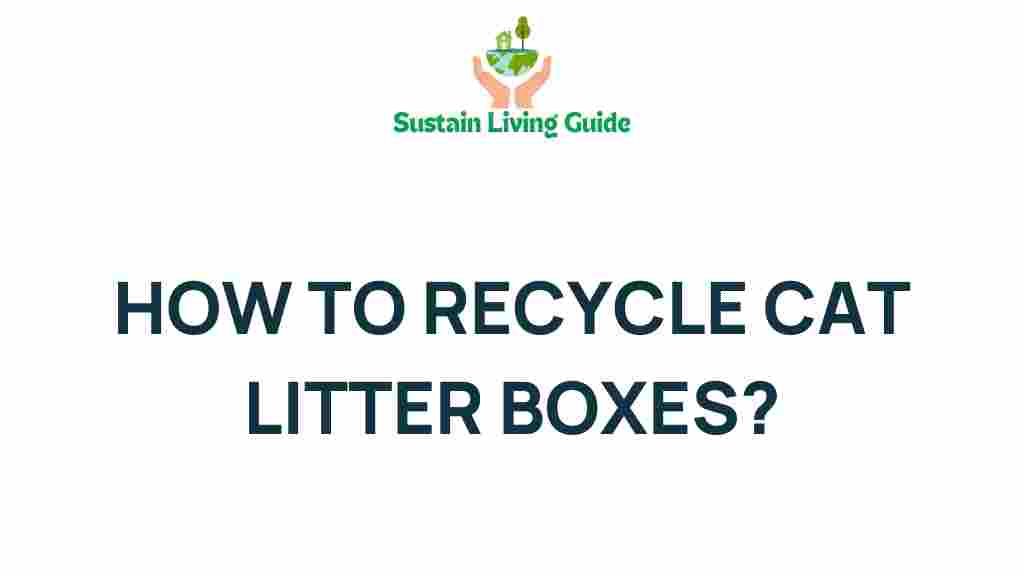Recycle Cat Litter Boxes Efficiently: Unveiling the Secrets
As a cat owner, you may be familiar with the challenges of disposing of cat litter boxes once they reach the end of their life cycle. However, recycling them is not only an eco-friendly choice but also a way to contribute positively to the environment. This article will guide you through the process of recycling cat litter boxes efficiently, providing you with valuable insights and tips along the way.
Why Should You Recycle Cat Litter Boxes?
Recycling cat litter boxes serves several purposes:
- Environmental Impact: Cat litter boxes, typically made from plastic, can take hundreds of years to decompose in landfills. Recycling helps reduce plastic waste.
- Resource Conservation: By recycling, you contribute to the conservation of natural resources used in manufacturing new products.
- Cost Savings: Some recycling programs offer incentives or discounts for participating, which can help save money.
Understanding the Types of Cat Litter Boxes
Before diving into the recycling process, it’s essential to understand the different types of cat litter boxes available:
- Plastic Litter Boxes: The most common type, typically made from high-density polyethylene (HDPE).
- Biodegradable Litter Boxes: Made from materials like recycled paper, corn, or wheat, designed to break down more easily.
- Self-Cleaning Litter Boxes: Usually contain electronic components, making them slightly more complex to recycle.
Step-by-Step Process to Recycle Cat Litter Boxes
Now that you understand the importance and types of litter boxes, let’s delve into the step-by-step process of recycling them efficiently.
Step 1: Clean the Litter Box
Before recycling, it’s crucial to clean your cat litter box thoroughly:
- Empty all litter into a trash bag for disposal.
- Use warm soapy water to scrub the box and remove any residue.
- Rinse well and let it dry completely.
Step 2: Check Your Local Recycling Guidelines
Recycling policies can vary by location, so it’s essential to check your local regulations:
- Visit your local waste management website or contact your municipality for guidelines.
- Some areas may have specific recycling programs for plastics, including pet products.
Step 3: Identify the Recycling Symbol
Look for the recycling symbol on the bottom of the litter box. This will help you determine if it’s recyclable:
- Most plastic litter boxes made from HDPE (indicated by the number 2 inside the triangle) are recyclable.
- Biodegradable litter boxes may not be recyclable through standard programs but can be composted.
Step 4: Prepare for Recycling
Once you’ve confirmed it’s recyclable, prepare the litter box:
- Remove any non-plastic components, such as filters or electronic parts from self-cleaning boxes.
- Flatten the box if possible to save space in your recycling bin.
Step 5: Drop-Off or Curbside Pickup
Depending on your local recycling program, you may have different options:
- Place the cleaned litter box in your curbside recycling bin if accepted.
- Visit a local recycling center and drop it off.
Troubleshooting Tips for Recycling Cat Litter Boxes
Even with the best intentions, recycling can sometimes present challenges. Here are some troubleshooting tips:
Tip 1: Check for Contaminants
Ensure that the litter box is free from contaminants such as leftover litter or waste. Contaminated items may not be accepted in recycling programs.
Tip 2: Explore Alternative Recycling Options
If your local program doesn’t accept cat litter boxes, consider alternative recycling methods:
- Some pet supply stores may have take-back programs.
- Look for specialty recycling companies that focus on pet products.
Tip 3: Repurpose Before Recycling
If recycling isn’t an option, think about repurposing your litter box:
- Use it as a storage bin for pet supplies.
- Transform it into a planter for flowers or herbs.
Conclusion: Make a Difference with Recycling
Recycling cat litter boxes is a simple yet impactful way to contribute to environmental sustainability. By following the steps outlined in this article, you can ensure that you’re recycling efficiently and responsibly. Remember to check local guidelines, clean your boxes thoroughly, and explore various recycling options.
Every effort counts, and by making recycling a part of your routine, you not only help the planet but also set a positive example for others. For more information on recycling programs, visit Earth911 for comprehensive resources.
As you continue your journey as a responsible pet owner, consider exploring other ways to reduce your pet’s environmental footprint. For additional tips on eco-friendly pet care, check out our article on sustainable pet practices.
Start recycling today and make a difference for generations to come!
This article is in the category Eco-friendly and created by SustainLivingGuide Team
